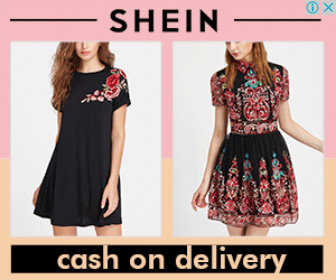Almost every woman nurtures an innate desire of looking good and feel 'accepted' in the socio-economic circle. The word fashion instantaneously brings to mind a flash of color with a dash of glamor. Women are taking to fashion in a big way, and are experimenting with different looks, styles, and textures. Let's take a look at the dynamic evolution of fashion worldwide.
Fashion plays an increasingly important role in an individual's life because it is considered as a means of self-expression. The garments and accessories that women wear, help them to identify with a group of others-whether it is a lifestyle, profession, a religion, or an attitude. Thus, the term "fashion" has become synonymous with the overall growth of country as well.

Several factors contribute to the evolution of fashion as a whole. It is a widely accepted fact that the rich and the famous, and the political figures and royalty have always moved the seasonal trends of fashion. The advertising media also contributes equally to update us about the daily style checks.
Fashion in India, a land rich in culture and tradition, has evolved through the centuries. This country, rich in culture represents a kaleidoscope of changing trends and traditions. Here, clothes perform different functions depending on the occasion. Be it festivals, parties, profession, or just a matter of reflecting attitude...fashion is simply 'in'.
Right from women who sport a dash of vermilion in the parting of their hair, to professionals on the go who wield the ladle and the laptop with equal ease, fashion forms an integral part of their lives. Today, fashion, for women, does not necessarily mean glamor, or the urge to follow the current trends. It is more a way of life, a reflection of inner beauty, where the intellect shines through, complete with comfort quotient.
Fashion not only highlights the social history and the needs of women, but also the overall cultural aesthetic of the various periods. The evolution of fashion dates back to several hundred years and as our attitude and culture change, fashion comes along with it.
In India, the fashion scenario was different in different political periods. During the British rule in India, the fashion trend within high society was strongly influenced by the British fashion style and western clothes became a status symbol in India.
Again during 1930s, emergence of different ideologies like communism, socialism and fascism imparted a more feminine and conservative touch to the women's fashion. However the period also witnessed the predominance of body hugging dresses with dark shades. The foundation of the Indian cinema also proved to be the strongest influence on revolutionizing the fashion scene in those days.
1940s was a decade marked by the second World War and the ensuing independence of India. Hence the period portrayed relatively simple yet functional women's clothing. During 1950s, the advent of art colleges and schools led to popularity of narrow waist and balloon skirts with bouncing patterns. Also, the adoption of khadi by Mahatma Gandhi made khadi garments a rage among women.
In the 1960s, the sweeping changes in fashion and lifestyle resulted in highly versatile fashion trends. In 1970s, the traditional material were exported in bulk to other nations. Thus, excess of export materials were sold within the country itself, which resulted in popularity of international fashion in India.
During 1980s and 90s, the advent of television and other advertising means gave a new edge to the Indian fashion scene. Influenced by ideas of several foreign designers, new design & pattern were introduced into garments. During these periods, power dressing and corporate look were the style statement. The revival of ethnicity was also witnessed in these decades.
Fashion is an ever changing process and may vary considerably within a society according to age, social class, generation, occupation and geography as well as over time. In the West, fashion had different forms at different times. In Europe, fashion emerged as an idea of personal statement in the 16th century. Since then there were several ups and downs in the fashion industry. In fact, highly prosperous societies in the world, offer different types of fashion options to choose from the clothes as well as accessories.
Various style statements were in vogue during the reign of Queen Victoria (1837-1901) in the west. "Victorian fashion" usually refers to fashion clothing popular in the Victorian era.
Fashionable garments for women started with a straight, regency silhouette, consisting of exaggerated skirts and sleeves. This was followed by small shoulders and slightly wider skirts supported by hoops or crinolines. Thus, with changing time period, the fashion scene kept on changing.
It has been further observed that fashion houses, fashion designers, along with high-status consumers like celebrities were the determining factors of change in fashion trends in various Western countries. In fact, fashion clothing started spreading from the upper classes to the middle and working classes in the West.
With advancements in the communication means, fashion shifted to various parts of the world and the traditional clothing styles of various continents like Asia, Africa and the US were superseded by the European style. In addition to that, the gradual growth of national economies led to the globalisation of international fashion styles.
Copyright © - Women Fashion Wear All Rights Reserved